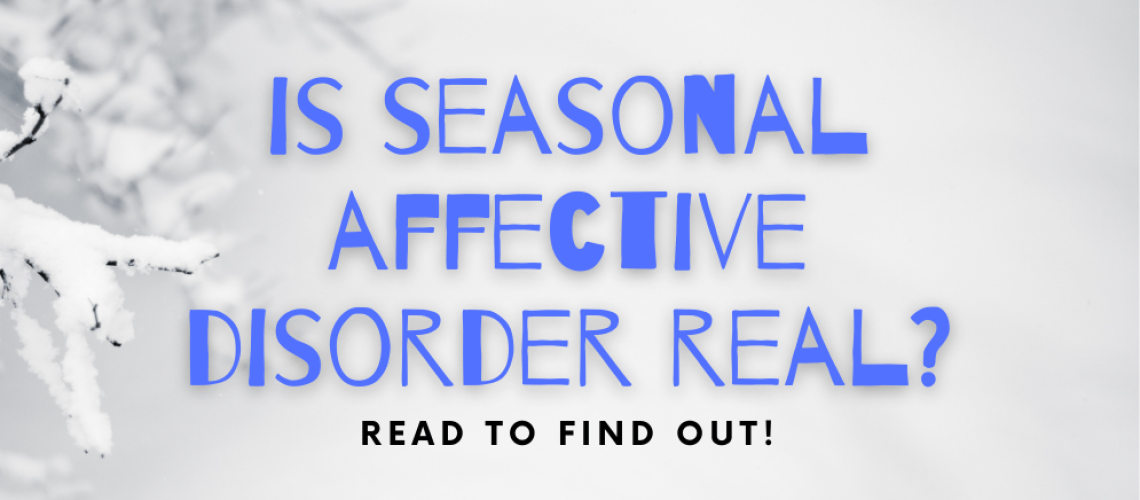Here we are in the heart of winter. Which brings many people into a seasonal slump of the “winter blues.” Most days, I feel this slump at its worst when the skies are gray and it feels like I am living in some black and white movie. Like I’m Dorothy in the Wizard of Oz, just waiting for the tornado to bring me to someplace with blue skies…palm trees…a margarita…ooh I’m getting carried away here.
Seasonal Affective Disorder (SAD) is a real thing. I always wondered if the professionals who chose what to call it purposely wanted to create the “SAD” acronym, or did it just work out that way? Who knows!
Anyway, let’s learn more…
*This post is for educational purposes only and not to be used as medical advice. Please consult a medical professional in regards to diagnosis and treatment
What We Know
Symptoms of SAD typically start at the end of a seasonal time period. Usually the fall season with the onset of the winter months, however, it can affect people only in the spring/summer months instead. People who have SAD know it’s coming based on a change of mood around that time.
Millions of people develop symptoms showing up typically between ages 18-30. More women than men are diagnosed. People who typically live in the Northern territories (think Washington State or Maine) are affected as opposed to those living in Florida or sunny California.
Even though most mental health conditions and symptoms like SAD are not fully understood on a biological stance, we are learning more every year.
So far, researchers believe it can be hereditary and affect those who already have symptoms of depression or family history. Also, those with Vitamin D Deficiency tend to have exacerbated symptoms.

Symptoms
Signs and symptoms of SAD can look very similar to depression with the main difference that the onset of symptoms is only during the winter months.
These symptoms may include:
- feeling down or depressed nearly every day at the start of the season
- loss of interest in hobbies or activities you typically energy
- fatigue and low energy
- issues sleeping
- changes in weight (usually weight gain)
- trouble concentrating or focusing
Of course, right now, these symptoms may seem like quarantine-like symptoms, so think back to a non-pandemic time to get a good gauge on whether or not these symptoms are seasonal.
Do I Have It?
In the professional mental health world, we use a diagnostic tool called The Diagnostic Manual of Mental Disorders. This is a textbook that is used to determine a mental health diagnosis when you see a psychologist, psychotherapist, or psychiatrist.
Currently, in the 5th version of the manual, Seasonal Affective Disorder the main criteria include:
- moods follow a seasonal pattern without non-seasonal episodes within the past 2 years (so if you experience symptoms in winter, this means you are not depressed in the summer for the past 2 years)
- seasonal onset
- full remission when season changes

Light is the New Drug
If your winter blues are actually seasonal affective disorder, there is something you can do about it…let there be light!
Light is fundamental to our health and well-being just as much as food and water. It’s important for sleep, memory, and mood and scientists are just scratching the surface on its effects.
With COVID, we are inside more than ever, and so it makes sense why people are feeling more depressed than ever given all the natural light that is lost by being confined indoors.

Getting nerdy here, but light actually affects every cell in the body and not only our biological clocks. Researchers believe light influences hormone production including fertility, your metabolism speed, to stress levels.
Light Therapy
Insert a therapy we all can do right now…taking what I will call a “light bath.” Research shows us that taking a 30minute light bath daily can help all of us, not just those with SAD. Of course, getting outside would be preferable, but you know…winter…COVID…remote learning, etc. I get it.
Insert the Lightbox, a way to get your daily dose of light in a short amount of time. You’ll want to choose a model that provides between 3,000-10,000 lux of white light and keep it about 14 inches from your face. 20-30 minutes a day is all you need in the morning and hopefully, you’ll notice your mood lifting over time.
Here’s my lightbox doing its thang…

Here are some box examples:
More affordable:
A wearable one:
Let the Sun Shine
Whether or not you think you are depressed or may suffer from Seasonal Affective Disorder, we have all been impacted by being inside more during this pandemic. Get some fresh air as much as you can and create your own light. I don’t just mean actual light, I mean the inside sunshine, the kind of light you have inside where you keep dreams, passions and create meaning for your life.
Keep that light shining and know there is hope for a better future!
Sending love and light your way











